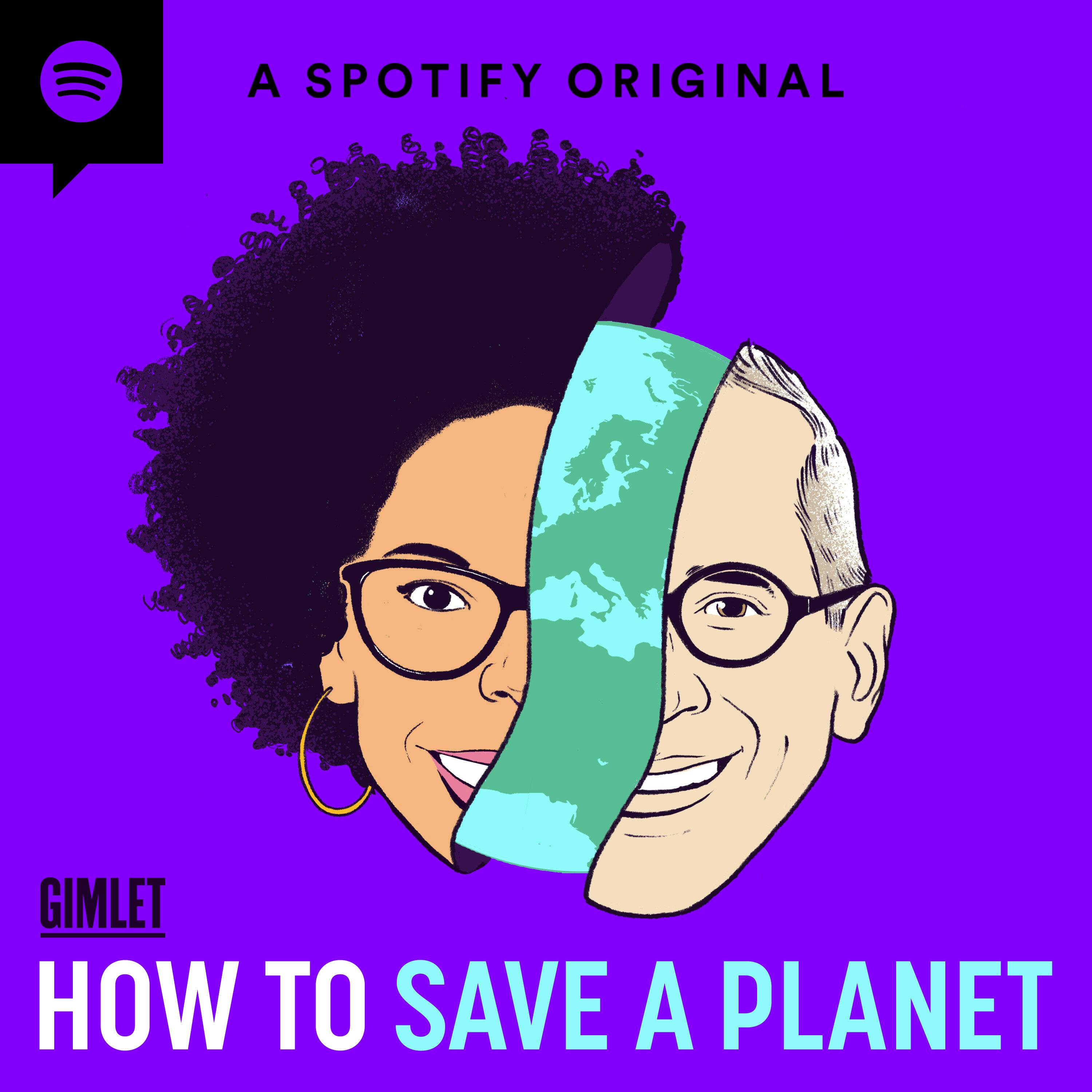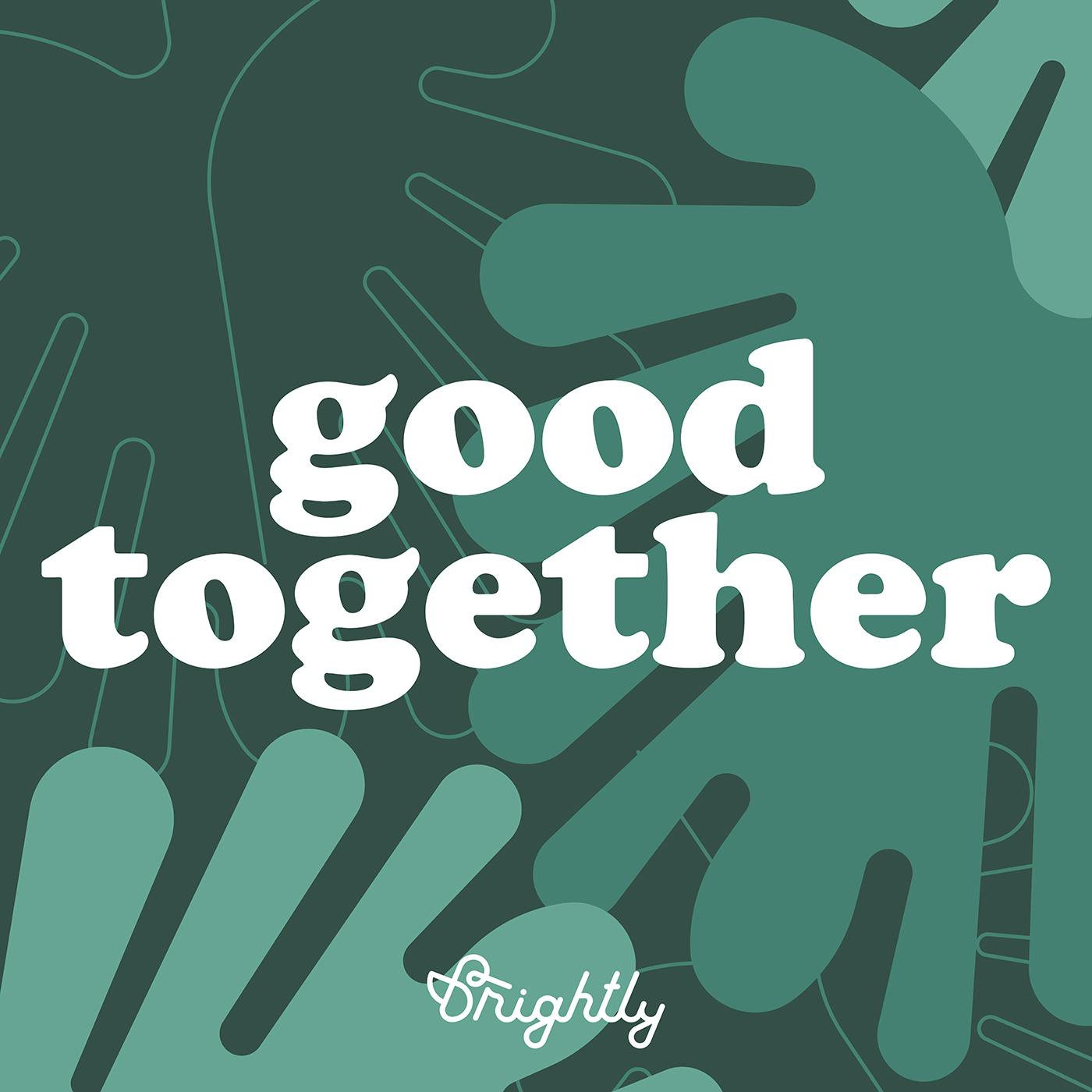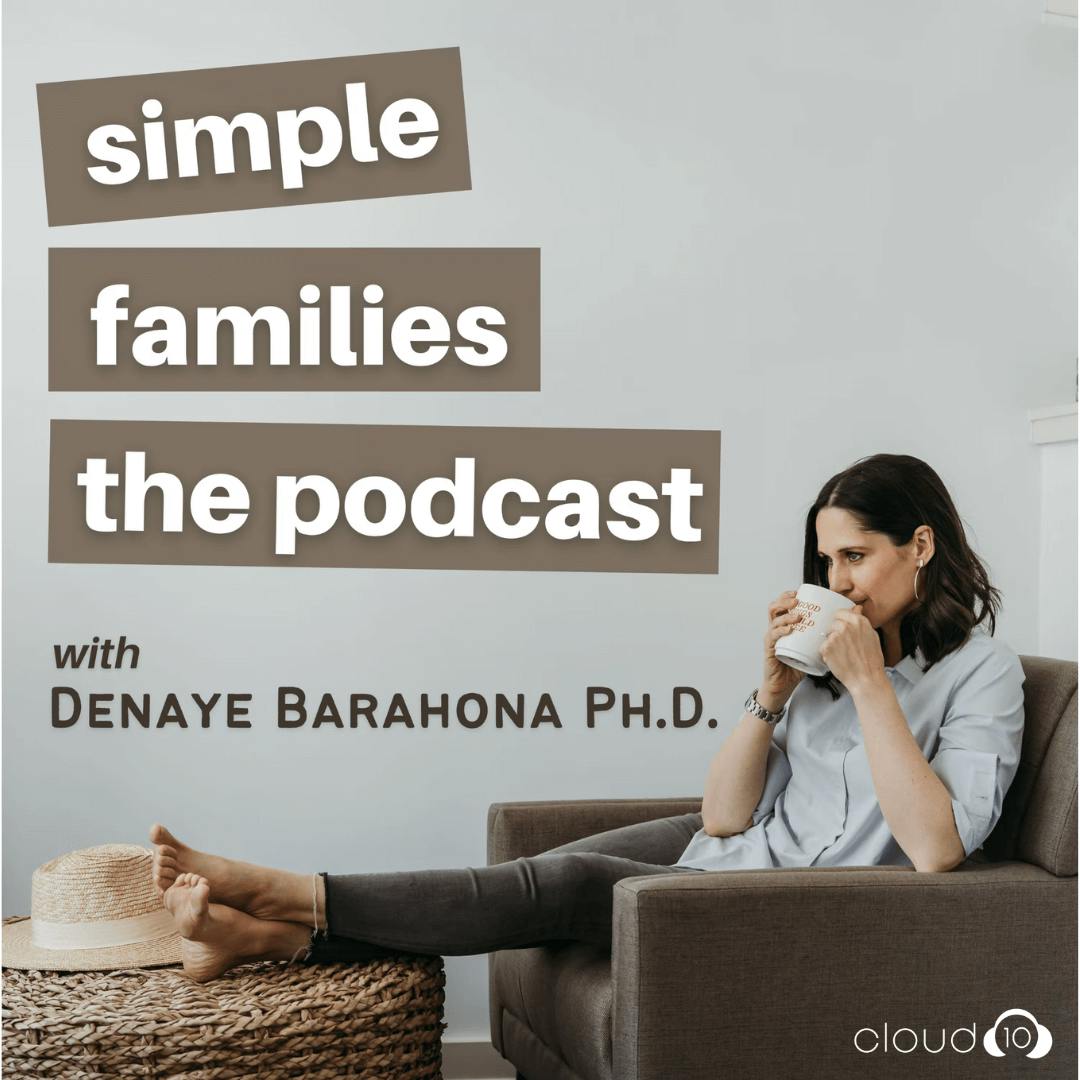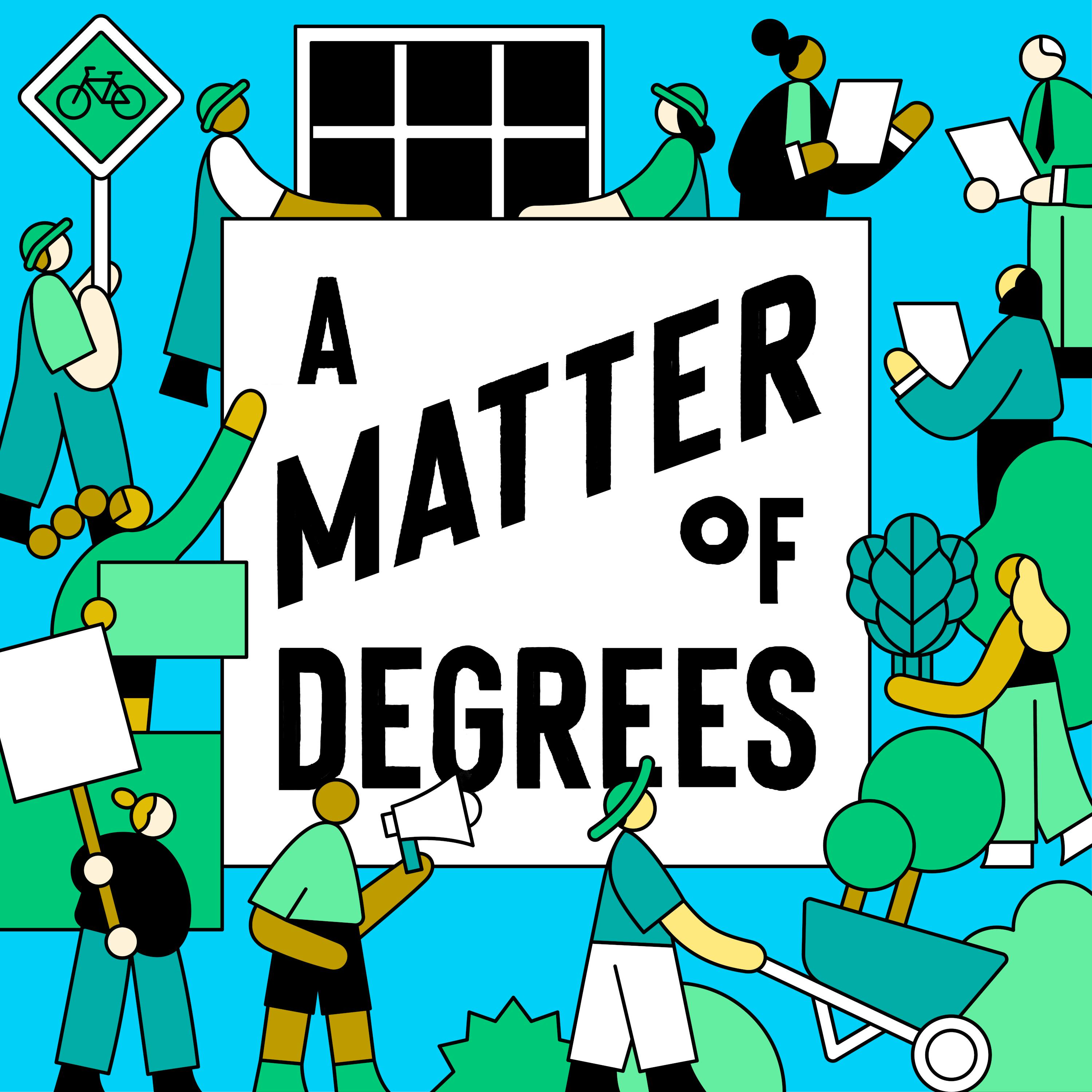
Sustainable in the Suburbs
Want to waste less, save more, and make your home a little more eco-friendly? Sustainable in the Suburbs is your go-to podcast for practical, judgment-free tips and real-life stories to help you build sustainable habits that actually stick.
Hosted by Sarah Robertson-Barnes — a suburban soccer mum, sustainability educator, and founder of the blog Sustainable in the Suburbs — this weekly show brings doable advice, honest conversations, and actionable ideas to help you waste less, spend smarter, and live more sustainably at home.
Because sustainable living doesn’t have to be perfect to matter — and you don’t have to do it all to make a big impact.
Start where you are, use what you have, and live a little greener.
Sustainable in the Suburbs
12: How to Quit Using Amazon — and Why You Should
We know it’s a problem, we just don’t know how to stop. Here’s how to start...
In this episode of Sustainable in the Suburbs, I’m talking about how to quit Amazon — or at least drastically reduce your reliance on it — in a way that’s actually doable.
We dig into the real costs of convenience, from environmental harm to the engineered scarcity of Amazon’s business model. But more importantly, I’ll walk you through how my family has shifted away from using Amazon — and how you can, too.
The goal isn’t to overhaul your shopping habits overnight. It’s about slowing down, paying attention, and finding new ways to shop that feel better for you, your wallet, and the world.
Takeaways
- Why reducing your Amazon use isn’t about guilt or going without — it’s about spending in ways that feel better for you, your values, and your community.
- The real cost of convenience: how Amazon’s business model fuels overconsumption and the plastic waste crisis.
- What “free shipping” really means — and why small businesses can’t compete.
- Practical ways to untangle from Amazon without making life harder.
- The three mindset shifts that helped me: Pause, Buy Local, and Shop Secondhand.
- Small, intentional changes away from Amazon support your local economy, reduce waste, and align with the kind of world you want to help build.
One Small Shift
Try a “pause rule” for online shopping — only place orders on a set day each week (or month) and let your cart sit until then. You might be surprised how many things you no longer want or need.
Resources
- Buy Less, Buy Better: My Favourite Canadian Brands
- Plastic-Free Pantry: How to Refill in Bulk
- Facebook Marketplace
- Buy Nothing Project
- Poshmark (invite code SUSTAINABLESRB)
- DePop
- ThreadUp
- Kijiji
- LEND-IT.CA
Connect With Me
Sustainable in the Suburbs is mixed and edited by Cardinal Studio
If you enjoyed this episode, I’d love it if you followed the show, shared it with a friend, or left a rating and review. Every little bit helps more people find Sustainable in the Suburbs — and live a little greener.
We know it's a problem. We just don't know how to stop. So here's how to start. Welcome to Sustainable in the Suburbs, a podcast for the eco curious who want to live a greener life and are looking for a place to start. I'm your host, Sarah Robertson Barnes, a soccer mom with a station wagon and a passion for sustainable living. Each week I'll bring you practical tips and honest conversations to help you waste less, save money and make small doable shifts that actually fit your real life. Because sustainable living doesn't have to be perfect to matter. and don't have to do it all to make a difference. Hello, welcome back to Sustainable in the Suburbs, the podcast where we start where we are, use what we have and live a little greener, one small shift at a time. My name is Sarah and thank you so much for tuning in and being a part of this growing community. If you're enjoying the show, you can support it by leaving a rating or review wherever you get your podcasts and that really helps other people find it. You'll also find links in the show notes to my blog, newsletter, shop, all that kind of stuff. Every little bit helps and it truly means a lot. As you can gather from the episode title, this week I'm going to be talking about how to quit Amazon or at least how to make a plan to significantly reduce how often you use it. I sat down to plan this episode while seeing all the press coverage around the grotesque display of wealth that was the Bezos Sanchez, let them eat wedding cake billionaire extravaganza earlier this summer. meanwhile, I'm over here riding my bike to the public library and not using plastic wrap and mending holes in the dishcloths that I knit from thrifted yarn. And I'll admit that I had some real like, what is even the point of all of this moments watching that. But then I remembered he is rich because of us. So let's talk about Amazon. If you're like me, you probably feel some kind of way about it. It's fast, it's cheap, it's convenient, but at what cost? You might get the ick when you place an order, but it feels impossible to quit. But you can. or at least quit-ish. Now, I want to be super clear from the top. This is not about perfection or shame or blaming individuals for the actions of corporate monopolies. For some folks, Amazon is one of the only viable options. If you live in a rural area or have mobility challenges or rely on it for your business, I totally get it. This is not about judging those realities. But if you do find yourself having other objections, I encourage you to just write those down and just sit with them for a bit and notice where you might have some wiggle room and make choices that feel more aligned when you can. So in this episode, I'm going to walk you through how my family has mostly quit using Amazon, how we actually made the shift and some of the reasons that we still do turn to it occasionally. Because let's be real, this isn't easy. but it is possible and you don't have to do it perfectly to make it count. So let me tell you quick story. One morning about seven or eight years ago, I got home from walking the kids to school and found a big bubble mailer from Amazon sitting on the front porch. So I brought it inside and I opened it and walked into my husband's office and said, like, dude, did you, did you prime a single pack of Post-It notes? And in that moment, he got it. Everything I'd been saying for the past few years about how convenience has a cost just sort of landed. and it was time to stop. But did we actually quit using Amazon? Mostly. We still order the odd thing from the bad place after exhausting all other options because we are not perfect and neither are the systems that we live in. There are a few things that are genuinely hard to source elsewhere. My husband, Brad, builds like computer things and there's a couple bits and bobs for his various tech things. I order my iron supplement from there. And then there's the occasionally weirdly specific replacement part again for like technology stuff that Brent does. And so they also do have a secondhand marketplace. So we've gotten the occasional thing from there. Our Instant Pot is from their secondhand marketplace, for example. So we still use this sometimes, but it is a last resort. We do not have Prime anymore. Nothing gets ordered without sitting in the cart for at least a week. and we've made a huge shift towards shopping secondhand and locally first. It's been a really eye-opening process and honestly, kind of a relief. We do still have an account and we do still make the occasional order, but we've managed to make it much less automatic. And that's the shift I wanna talk about today. So a bit later in the episode, I'll walk you through the specific strategies that have worked for us and a few that might work for you too. If you're wondering whether it's really worth the effort to cut back, let's take a minute and unpack what we're actually saying yes to when we default to Amazon. I touched on this earlier, but let's start with the obvious. Jeff Bezos is now fully in his cartoon villain era. His yacht has a yacht. There's space trips, just propensies, not to mention his foray into politics. It's pretty clear that Amazon hasn't just made him one of the richest men to ever live. It's made him feel Untouchable. And that's gross. So here's the thing. His enormous wealth is not by accident. Amazon is designed to make us buy more, the more quickly, the more impulsively and more often. It's not a coincidence that ordering is easier than thinking. The entire platform from the, might also like to one click ordering. Amazon is designed to remove friction. Prime makes it even harder to notice. When shipping feels free and instant, it encourages us to spend more just to make the membership quote, worth it. But remember that free shipping and free returns are an illusion. There's no such thing as free. It's built into the cost and many returns are bound for landfill, not restocking. More on that in a second though. And Amazon is so much more than just the marketplace. They also own Prime Video, Audible, Kindle, Goodreads, Twitch, Ring, IMDB, Sappos, Whole Foods, Alexa, and Amazon Web Services, which powers huge chunks of the internet and a few more beyond that. So yeah, it's a lot bigger than bubble mailers. There's also a whole ecosystem now of Amazon influencers. Everybody's got a storefront. TikTok made me buy it trends that normalize over consumption as content. Your data and search habits are being used to directly target you to buy more things that you do not need. And don't even get me started on hauls. It's become so much more than shopping and that is deeply unsettling. So already not great. And ethically, it's not pretty either. Amazon's business model is built on extracting as much labor as possible for as little cost as possible. And that ripples out in every direction. Warehouse workers have impossible productivity quotas, little to no benefits, and are actively blocked from forming unions. Delivery drivers, who are gig workers in many cases, are expected to hit metrics that leave no time for basic breaks. And despite generating billions in revenue, Amazon pays minimal taxes in a lot of jurisdictions and lobbies against regulation, all while operating on the public infrastructure that we all share. And I know that plenty of small businesses sell through Amazon because you kind of have to. Amazon controls such a huge chunk of the online marketplace that if you're not on it, you're often invisible. And I get that. It's not on small businesses trying to stay afloat. But also Amazon has a long history of copying products, undercutting the original seller and making their listing harder to find. And then there's the waste. the shipping, the packaging, the sheer volume of stuff moving around the world at all times just to show up on our porches a day later, not to mention all of the resources and labor and extraction that went into making the stuff itself. And I know that we all know it's bad, but let me just throw a few quick stats at you. In 2020, Amazon was estimated to have generated around 600 million pounds of plastic packaging waste. with a huge chunk of that ending up in landfills or the ocean. And in 2023, Amazon reported nearly 69 million metric tons of carbon dioxide emissions. That's more than the annual emissions of entire countries. This doesn't take into account the carbon dioxide emissions and the water resources that are now being used for all of the AI integration. So those numbers should be interesting in a little bit. And those free returns. A CDC marketplace investigation found that as many as one in three Amazon returns in Canada goes straight to landfill because that write-off is cheaper than paying someone to restock it. Globally, it's even worse. And I know this isn't news to most people, but sometimes it helps to slow down and just name what we already know. Okay, that last section was a lot. And when you really sit with the magnitude of the problem, it's easy to feel stuck and overwhelmed. So here's how to use Amazon less without making your life harder. If you're not sure where to start untangling yourself from Amazon, here's what helped me. So let's talk solutions and know quitting cold turkey almost never works. We're not trying to overhaul everything today. Just start noticing your habits and look for a few places where you can shift toward more intentional purchases. The three biggest ideas that helped me reduce my Amazon use were to pause, buy local, and shop secondhand. So here are some small doable steps with those things in mind that can make a real difference. Let's start with pause. Amazon is built to encourage speed and impulse buying. That's a feature, not a bug. So one of the most powerful things you can do is slow down. Step one is going to be to cancel prime. You'll save money by dropping that annual fee and you'll be less tempted to make unnecessary purchases just to get your money's worth. It's also gonna help you reset your expectations around shipping times when you have to wait a few more days for things. Next, you're gonna create a pause. Ordering is easy, but waiting is hard. create a rule in your house that you only order on specific days of the week, let's say Thursday, and then let things sit in the cart until that day. That's going to give you some time to reflect on what you're actually buying and keep better track of your spending. And when you go to order, you're going to very likely delete things that you either forgot about or lost interest in, or it turns out you didn't actually need them at all. This method also results in items being shipped together in a single delivery rather than several. So start with the seven day rule and then bump it up to bi-weekly, then monthly, et cetera. And I think you might just be surprised by what changes just by slowing down. Part of pausing also means unsubscribing and unfollowing. So you may need to create some hard boundaries for yourself because it is so easy to just add to cart. Delete the Amazon app from your phone and log out on your computer. Take out your saved payment info. and unsubscribe from their emails. And if you follow a bunch of influencers, might be time to let those go too. The next shift is to stop defaulting to Amazon and start shopping at small and local businesses whenever and wherever you can. One way to do this is to use Amazon like a search engine, not a store. If you find something you like on Amazon, it exists off Amazon as well. So look it up and see if you can buy it either directly from the brand or manufacturer. or from a small local retailer. In your phone, make a list. Keep a running list of local shops or small online businesses that you want to support. Talk to your friends and neighbors about shops that they love. I also have a blog post that is a gigantic list of small ethical eco-friendly brands for you to check out that I will link down in the show notes. And finally, reframe your shipping expectations. Just a reminder, Amazon has trained us to expect free shipping, but we know it's not actually free. Someone is always paying. So when that small shop charges you for shipping, that's just the real cost of doing business. And chances are that that business owner packs your order themselves because they actually care about you. I know it might be a little more expensive, but consider the difference. When you spend money locally, More of that money stays in your community and it supports real people, not a faceless machine and not a cartoon villain. You'll be buying less, but better. You don't have to do it all. Just start where it makes sense. And finally, the thing that changed the way that we shopped the most was buying secondhand. Secondhand shopping apps are how my husband finally jumped into sustainable living with both feet. There is almost nothing this man can't find secondhand. So a few quick tips for her. shopping secondhand. Get what you need, not what's new. Almost everything you could ever need already exists, but you have to slow down and look for it. Weekly trips to the thrift store beats a trip to the mall every time. And finding nothing to buy is actually fine. It's good even. Check your local buy nothing group. So buy nothing, you can check out buynothing.org. They are typically on Facebook. So find your local buy nothing Facebook group. It is an amazing way to find what you need for free and keep things out of the landfill. It's also a great way for you to pass on perfectly good things that you are no longer using all while connecting with folks in your local community at the same time. Lastly, get on the apps. Try Facebook Marketplace. There are so many other great apps for almost everything these days. There's Poshmark and Depop and a whole bunch of others for clothing and some housewares. uh Kidizen is great for kids' clothes. ThreadUp, all these kinds of places. There are so many. I'll link a bunch down in the show notes for you too. Like that thing you like from The Bad Place, I bet you can find it or something similar on one of those apps without much difficulty. Shopping secondhand takes more time, but that's the point. It helps you shop more mindfully, more carefully, and with more intention. You'll figure out what works for your life, one decision at a time. All right, so as you know, I like to end every episode with a segment I call One Small Shift. And the idea is simple. Sustainable living can feel really overwhelming, but it doesn't have to be. Small changes made consistently and intentionally really do add up. And since it's just me this week, I will share the one that made the biggest difference for me. Delete the Amazon app off your phone. That's it, just delete it. It doesn't sound like much, but... Removing that shortcut cuts off the impulse loop. You stop filling time by scrolling for stuff or just adding things to the cart without really thinking about it. And you'll give yourself a little breathing room to pause before buying, because you're going to have to go to your laptop to do it. The big internet. So take it off your small internet device, just delete it. You can still access it from your browser if you really need to, but that extra step is going to add just that little bit of friction to help you be more intentional. So try it right now. Delete the app and see how it feels. You might just be surprised by what shifts. So here's what I hope you take away from all of this. Cutting back on Amazon isn't easy, but it's not impossible either. And when you do start shifting your habits, it makes a real difference in other areas of your life too. Not to mention your wallet and your local community and the planet. Buying less and buying better can feel slower at first, but over time it leads to more meaningful purchases. You'll stop impulse buying things that don't matter. You'll support people doing good work. You'll build a life that feels more aligned with your values, not just full of more stuff. And like everything I talk about on this podcast, it doesn't have to be perfect to be worth doing. Do what's doable and celebrate every step along the way. So I'd love to hear how this lands for you. What's helped you reduce your Amazon use? What still feels hard? Everything in between. So slide into my DMs or send me an email. If you are looking for more practical tips, low waste ideas, or just want to keep in touch, you can follow me on Instagram at Sarah Robertson Barnes, or find me over at sustainable in the suburbs.com. You can also sign up for my newsletter while you're there. All of that and other ways to support the podcast are all linked in the show notes. Thanks again for listening today. I'm so glad you're here until next time. Start where you are, use what you have and live a little greener. Thanks for tuning in to Sustainable in the Suburbs. Every small step adds up and I'm so glad we're doing this together. If you enjoyed this episode, please make sure to follow the show, share it with a friend and leave a review wherever you get your podcasts. You can find me at sustainableinthesuburbs.com or at Sarah Robertson Barnes on all the things. Until next time, start where you are, use what you have and live a little greener.


![[OLD IMPORT] Green Dreamer: Seeding change towards collective healing, sustainability, regeneration Artwork](https://img.transistor.fm/Cu7NhHL7AkMmLzHdklSCPpCReUYOwJA3MsPaYf0GyVQ/rs:fill:0:0:1/w:1400/h:1400/q:60/mb:500000/aHR0cHM6Ly9pbWct/dXBsb2FkLXByb2R1/Y3Rpb24udHJhbnNp/c3Rvci5mbS9hZWY0/MTZkZjU2NTNmM2Ez/YzFmMjU1ODRhMzRk/YmE3ZC5wbmc.jpg)






